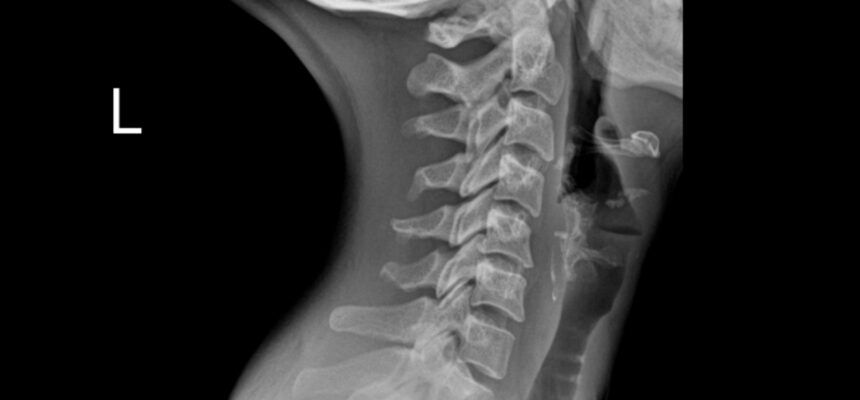Radiographic Evaluation of the Cervical Region
Medical students should be well-versed in the essentials of interpreting cervical X-rays. Here’s a concise guide: Indications:
- Trauma: Assess for fractures, dislocations, or soft tissue injuries after neck trauma.
- Degenerative Conditions: Investigate cervical spondylosis or disc pathologies.
- Inflammatory Conditions: Evaluate for infections or inflammatory disorders.
Contraindications:
- Pregnancy: Minimize exposure, particularly during the first trimester.
- Unnecessary Exposure: When clinical assessment alone is sufficient for diagnosis.
- Advanced Imaging Preferred: Cases requiring detailed assessment, where CT or MRI is more suitable.
Interpretation:
- Alignment: Assess for normal alignment or any subluxations.
- Fractures: Identify fractures in the cervical vertebrae.
- Disc Spaces: Evaluate for disc height and potential herniations.
- Soft Tissue: Look for swelling or air in soft tissues.
- Joint Spaces: Examine for any abnormalities in the facet joints.
Potential Findings:
- Fractures: Various types, including compression fractures or fractures of the odontoid process.
- Dislocations: Subluxations or complete dislocations of cervical vertebrae.
- Degenerative Changes: Disc space narrowing, osteophyte formation.
- Soft Tissue Abnormalities: Hematomas, swelling, or air in the soft tissues.
Actions to Be Taken:
- Consult Radiologist: Seek expert opinion for complex cases.
- Clinical Correlation: Correlate findings with the patient’s clinical history and physical examination.
- Further Imaging: If X-ray is inconclusive or more detail is needed, consider CT or MRI.
- Timely Reporting: Communicate findings promptly for appropriate patient management.
- Consider Patient Factors: Age, comorbidities, and clinical presentation influence the approach.
Medical students should grasp the fundamentals of cervical X-ray interpretation, understanding its role in diagnosing traumatic and degenerative conditions. Collaboration with radiologists and clinicians is crucial for comprehensive patient care.
Verified by Dr. Petya Stefanova
